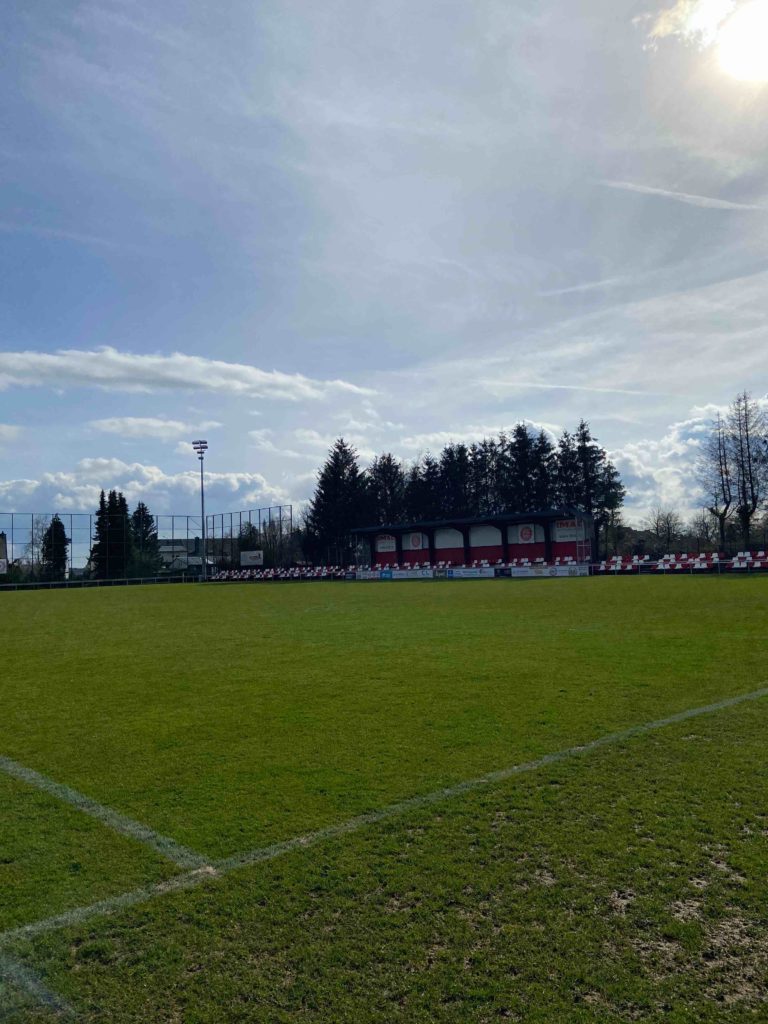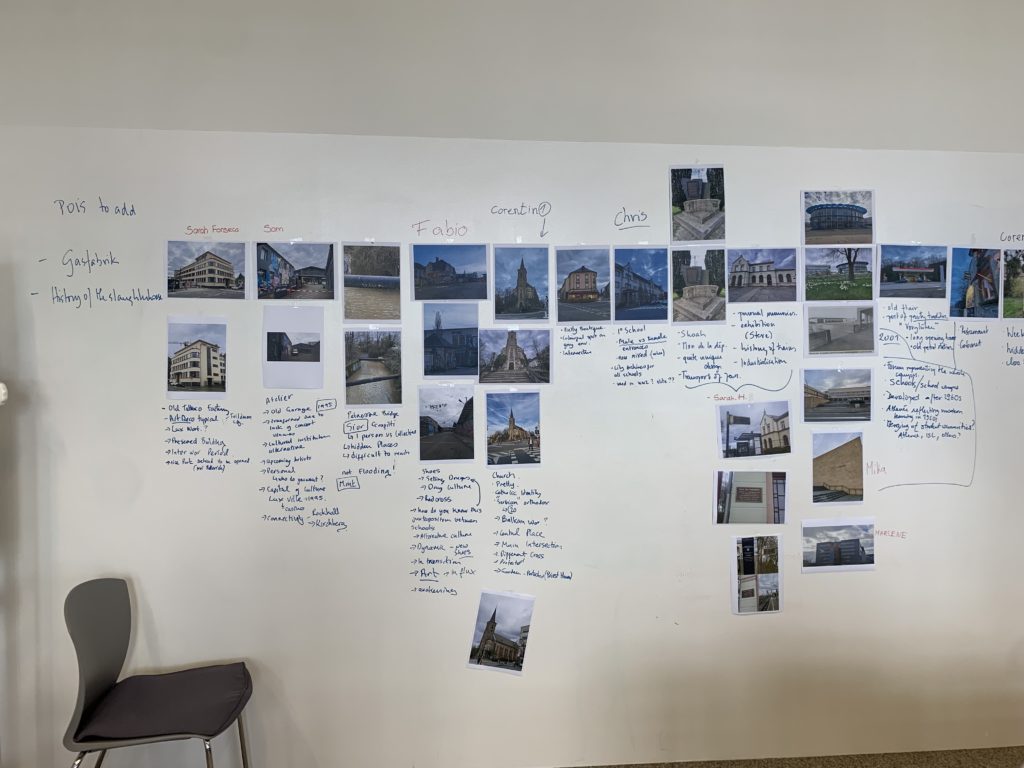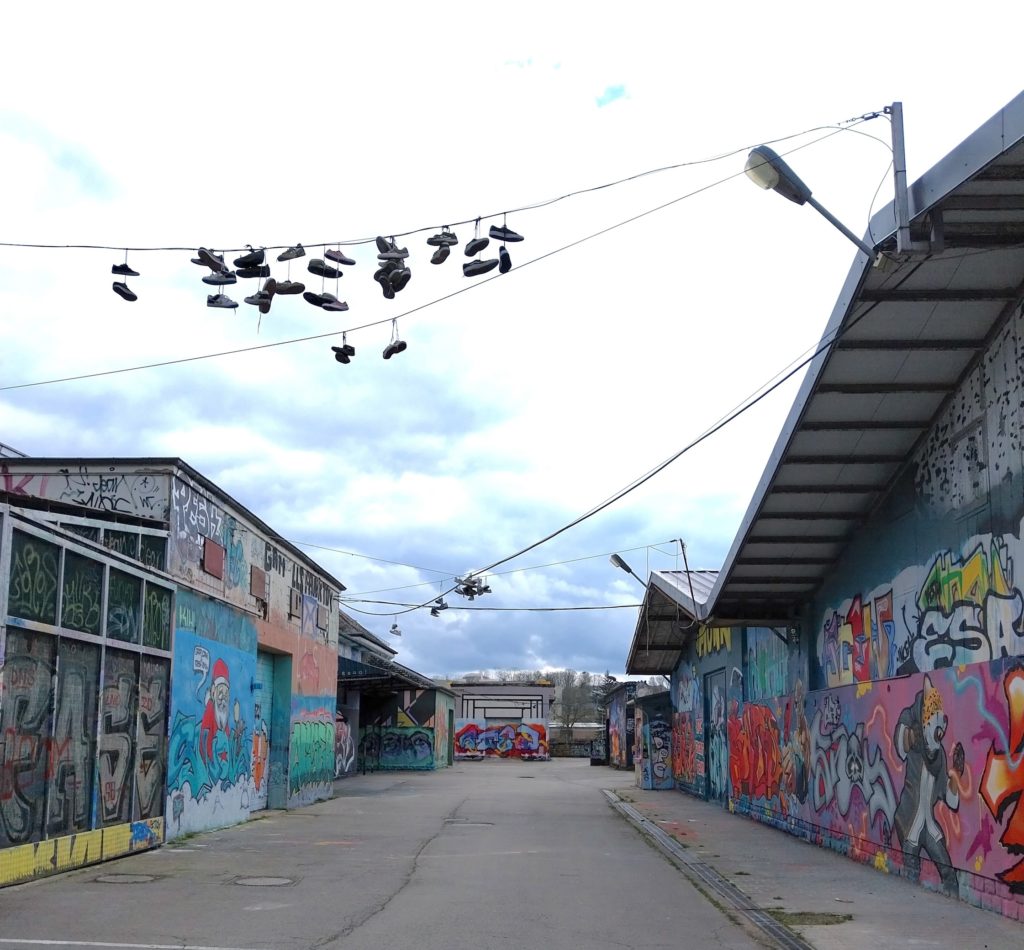
Heritage is not only found in museums or monuments. It lives in motion – when we walk through streets, notice small traces of everyday life, and share stories that connect us to places and to each other. In Luxembourg, where many cultures and languages meet, fragments of everyday heritage a washhouse, a street corner, or even a soccer field soon to become housing – become touchstones of belonging and resilience. (Illustration: Former soccer field in Cents, Luxembourg; Nuno Laureano)
Why Everyday Heritage Matters
Everyday Heritage reflects ordinary lives. It connects memories across communities and gives visibility to what might otherwise be forgotten. These traces make us ask: Whose stories are remembered? Whose risk being lost?
Walking and Participation
Heritage is not static – it is created through participation. Practices like critical autobiographic walking turn simple paths into spaces of reflection, linking personal memory with collective history and opening dialogue between past and present.
Teaching Representation
For the past three years, I, Marie-Paule Jungblut (public historian), together with geographer Tom Becker, have explored these methods with second-year history students in the seminar Representing the City of Luxembourg at the University of Luxembourg. We have co-created digital walking tours of the districts Cents, Hollerich, and Clausen, available on the free app https://izi.travel/fr.

The project shows the value of teaching public history methods: students learn to represent heritage in participatory and creative ways, to give visibility to fragile traces, and to share authority with communities. Our transdisciplinary collaboration – combining geography and public history – demonstrates how diverse methodologies enrich both research and representation.
Towards Shared Belonging

By noticing and sharing everyday heritage, we strengthen connections in plural societies. Each walk, story, and student project adds to a collective fabric that values inclusion and participation. The resilience of a city may lie in keeping such small memories alive while embracing change.
This is why teaching public history methods is crucial: it gives students tools to mediate between past and present, to work dialogically with communities, and to make history matter in public life. (Illustration: Former Slaughterhouse in Hollerich, Luxembourg, Fabio Dammicco)
Grounding in Concepts
Our work is guided by key approaches in heritage practice and education:
- Dialogical History – understanding history as a conversation between multiple voices.
- Shared Authority – recognizing that expertise is co-created with communities, not imposed.
- Problem-Oriented Learning – exploring real challenges as starting points for inquiry.
- Self-Directed Learning – giving students responsibility for their own research paths.
- Reflective Practice – critically examining how we work and learn.
- Interdisciplinary Perspectives – drawing on methods from different fields to enrich understanding.
- Critical Autobiographical Walking – using walking as a method to connect personal memory with collective history.
© Marie-Paule Jungblut